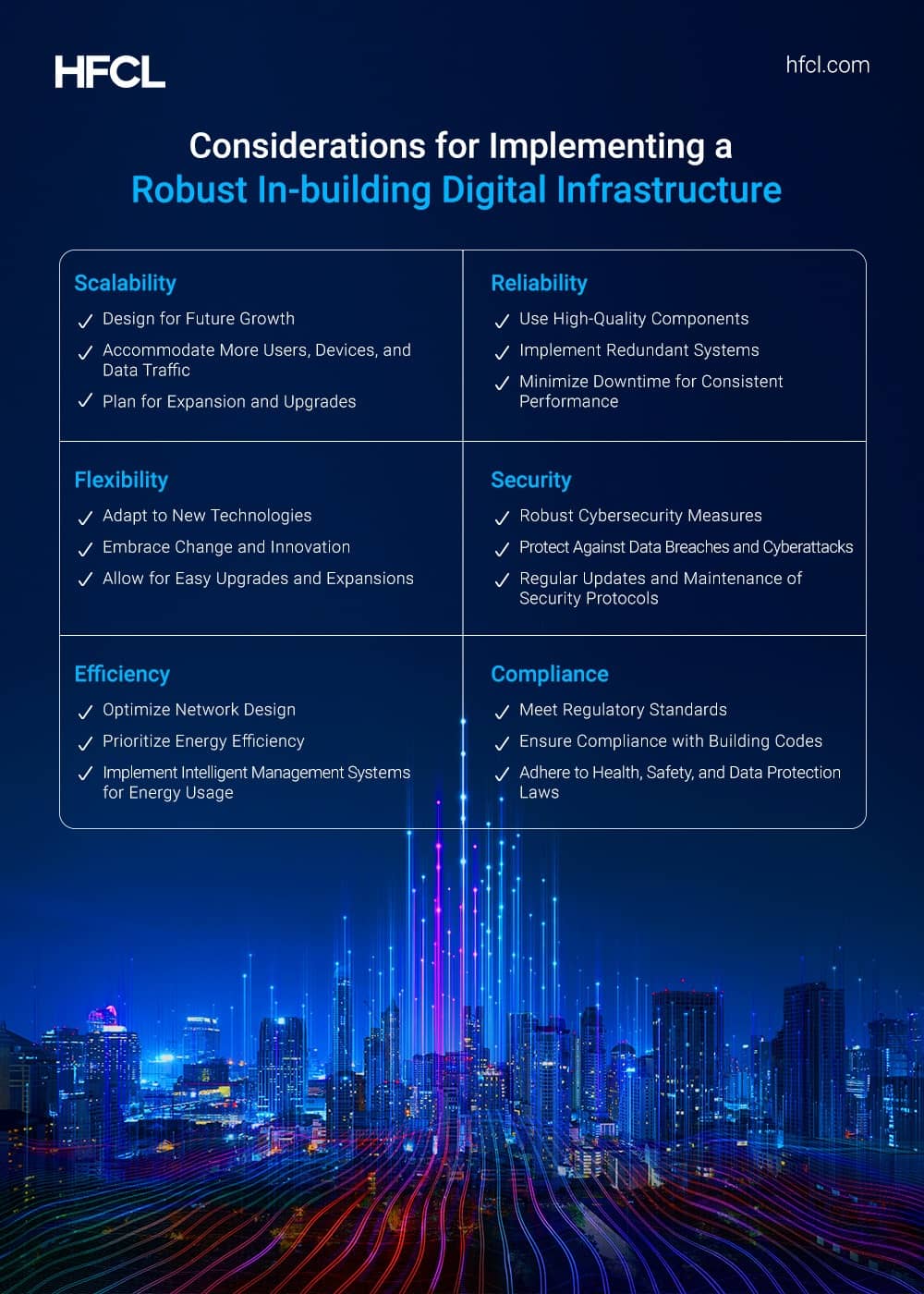It's often overlooked that despite the mobile phone's significant role and importance in our lives, a substantial portion of data traffic (85%) and voice traffic (70%) occurs within buildings and urban environments, according to the Digital Infrastructure Providers Association. With the advancement of 5G and future 6G applications, this percentage could potentially increase to 90-95% in the foreseeable future. This highlights the crucial importance of high-quality in-building digital infrastructure and connectivity, known as digital connectivity infrastructure (DCI). And guess what? Optical fiber cables can play a crucial role in building a robust in-building digital infrastructure. Yes, these thin strands of glass are like the highways of data, zipping information from one end of your building to the other at lightning speed. Let’s learn more about the role of optical fiber cables in building a robust in-building digital infrastructure.
Why optical fiber cables for in-building digital infrastructure?
-
Speed is King:
Imagine this: you're watching your favorite show online while your co-worker uploads big files for a presentation. Thanks to optical fiber cables, there's no buffering, no delays—just smooth sailing. They use light to send data, making them much faster than copper cables. Moreover, with speeds reaching up to several terabits per second, the capacity for simultaneous high-demand applications is significantly larger, enhancing productivity in both residential and commercial settings. -
Built to Last:
Unlike their copper counterparts, optical fiber cables are tough cookies. They handle moisture, temperature changes, and even electromagnetic interference with ease. So, whether it's scorching hot or freezing cold outside, your digital infrastructure remains rock-solid. -
Future-proofing 101:
Remember the days when upgrading your internet speed meant a tangled mess of cables? Say goodbye to that headache. Optical fiber cables have room to spare for future upgrades. So, whether it's streaming holographic movies or powering virtual reality offices, they've got you covered. -
Security, Locked Down:
Ever worry about hackers snooping on your data? Optical fiber cables are like Fort Knox for your information. It's nearly impossible to tap into them without raising a red flag. So, you can rest easy knowing your digital infrastructure is safe from prying eyes. The absence of electromagnetic interference means that data transmitted over fiber is less susceptible to eavesdropping than electrical signals in copper cables. -
High Data Carrying Capacity:
Handling heavy data loads used to be a headache, slowing everything down. But not anymore. Optical fiber cables can transport vast amounts of data over long distances effortlessly. Optical fibers ensure seamless operation, whether you're streaming high-quality videos, transferring hefty files, or engaged in real-time communications. This high capacity is critical in environments that require massive data transfers, such as data centers, hospitals, and educational institutions, where efficiency can significantly impact operations. -
Lean and Green:
Compared to bulky copper cables, optical fiber cables are thin and lightweight, optimizing space usage within cable ducts and conduits. These cables are the eco-friendly option, with their thin build minimizing material usage and reducing environmental impact during production. Their lightweight design also means less energy is required for transportation, making them a sustainable choice for modern buildings and infrastructure projects.

Harnessing optical fiber cables for in-building digital infrastructure
-
Network Backbone:
Optical fibers serve as the backbone of the in-building network, connecting different floors, wings, or sections of the building to central network equipment, such as switches, routers, and servers. They provide high-speed, high-bandwidth connections capable of supporting the data traffic generated by various devices, applications, and services within the building. -
Local Area Networks (LANs):
Optical fibers are used to establish local area networks (LANs) within the building, connecting individual devices, workstations, and servers to the central network infrastructure. They ensure fast and reliable communication between devices, facilitating seamless collaboration and data sharing among occupants. This enhanced connectivity also allows for the integration of next-gen applications, such as virtual reality collaboration tools, which require high data rates and low latency for optimal user experiences. -
Wi-Fi Backhaul:
Optical fibers are employed to backhaul data traffic from Wi-Fi access points (APs) to the central network, ensuring robust connectivity and high-speed internet access throughout the building. They support the increasing demand for wireless connectivity driven by the proliferation of mobile devices and IoT gadgets. -
Distributed Antenna Systems (DAS):
Optical fibers serve as the transmission medium for DAS, which enhances cellular coverage and capacity inside buildings by distributing and amplifying cellular signals. They connect remote radio units (RRUs) or antennas to base stations or small cells, extending cellular coverage to areas with poor signal penetration.
.jpg)
Benefits of optical fiber cables in in-building digital infrastructure
Fast Streaming:
Imagine a world where buffering is a distant memory. Thanks to optical fiber cables, streaming platforms like Netflix and YouTube deliver pixel-perfect quality, even during peak hours. So, go ahead, and binge-watch your favorite series guilt-free.Smart Buildings, Smarter Choices:
Ever walked into an office that adjusts its temperature and lighting based on occupancy? That's the magic of optical fiber cables at work. They're the backbone of smart building systems, making energy efficiency a breeze.Emergency Ready:
When disaster strikes, every second counts. Optical fiber cables power emergency communication systems, ensuring critical alerts reach everyone in the building in a heartbeat.
Wrap-Up
Looking ahead, the future of in-building digital infrastructure appears promising. According to projections by Facts and Factors, the worldwide digital infrastructure market reached a valuation of USD 120.14 billion in 2022. It is anticipated to surge to USD 655 billion by 2030, exhibiting a compound annual growth rate (CAGR) of 23.61%. Moreover, emerging trends such as the Internet of Things (IoT), 5G connectivity, and artificial intelligence (AI) are poised to revolutionize the way buildings operate. These technologies, coupled with the robust backbone provided by optical fiber cables, will pave the way for smarter, more efficient, and sustainable buildings of the future.